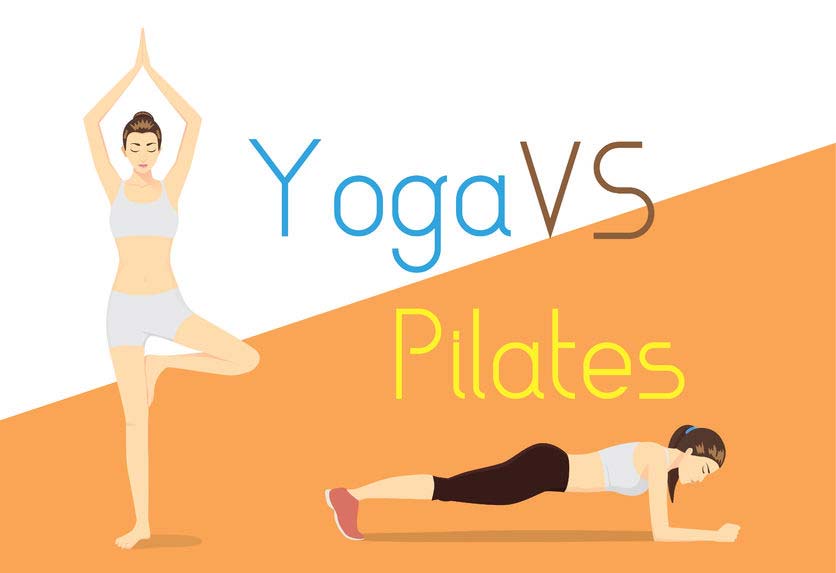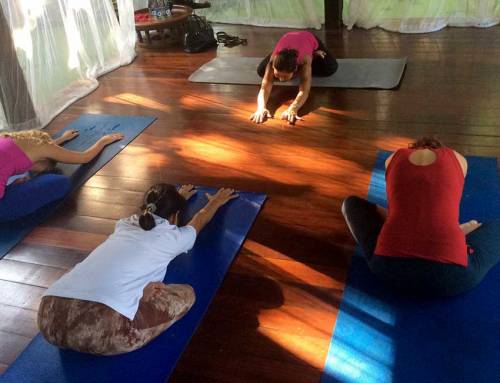Yoga and Pilates are both great workouts. If you have a health condition, you may want to consult an instructor to determine what’s best for you.
Many forms of yoga require substantial flexibility and mobility of the joints, especially the spine, hips, and wrists. Although most poses can be modified, a person with severe limitations or pain may find it challenging to follow along in more advanced classes.
Pilates can be a great exercise for older adults or those recovering from injury due to its low- impact exercises and subtle movements. There are many forms of Pilates. The main difference between them is the type of equipment used.
Equipment-based workouts use many of the same movements as in a mat class, but with added resistance. Mat Pilates is great for many people, but it can be more challenging for those with decreased mobility or poor core strength.
- Pilates can be expensive, and access to equipment is mandatory for some forms of Pilates. As with yoga, Pilates can be modified, but proper teaching and performance of the exercises is crucial to avoid injury.
- Both yoga and mat Pilates can be done with little equipment. They require only the use of a mat and a few additional props like a block or a Pilates ring, if desired.
- They both focus on using the breath properly during exercise and emphasize diaphragmatic breathing, or breathing deep into the belly.
- Both yoga and Pilates require mental focus and can help reduce stress. They can also be tailored to different fitness levels.
Pilates
Pilates was developed by Joseph Pilates (born 1880) at the end of World War I. It was primarily used as rehabilitation for wounded soldiers. Pilates brought his method to the United States in 1923 and spent years refining his approach.
Pilates may:
- increase muscle strength and endurance
- improve flexibility and posture
- lead to better balance
- result in decreased joint pain
Pilates focuses on small movements that require the use of important stabilizing muscles of the back and core. There is a strong emphasis on starting each exercise with a controlled breath that initiates a contraction of the core muscles. Pilates can be done on a mat or on specialized equipment. The equipment is unique as it only uses springs, levers, and your own body weight to provide resistance.
Evidence suggests that Pilates may be beneficial for those with the following conditions:
- arthritis
- urinary incontinence
- respiratory conditions
- joint injuries
- back pain
Yoga
The exact origins of yoga are unknown. But it’s been around for at least the past 3,000 years. Yoga has roots in shamanism, Buddhism, and other Eastern religions. It’s centered on the five beliefs of:
- proper relaxation
- exercise
- breathing
- diet
- positive thinking and meditation
Mindfulness and deep breathing are key features in a yoga practice. Although there are many different types of yoga, holding various poses and flowing through different series of movements is standard in most classes. Yoga can be seen as a form of mind-body fitness. It combines physical activity and mindful focus. This brings increased awareness to the breath and energy.
The benefits of yoga have been studied extensively. In addition to physical and mental benefits, yoga is also known to have positive effects for medical issues, including:
- anxiety
- depression
- multiple sclerosis
- arthritis
- respiratory conditions
- high blood pressure
- chronic pain
- type 2 diabetes
Hatha Yoga
The word hatha means willful or forceful. Hatha yoga refers to a set of physical exercises (known as asanas or postures), and sequences of asanas, designed to align your skin, muscles, and bones. The postures are also designed to open the many channels of the body—especially the main channel, the spine—so that energy can flow freely.
Hatha is also translated as ha meaning “sun” and tha meaning “moon.” This refers to the balance of masculine aspects—active, hot, sun—and feminine aspects—receptive, cool, moon—within all of us. Hatha yoga is a path toward creating balance and uniting opposites. In our physical bodies we develop a balance of strength and flexibility. We also learn to balance our effort and surrender in each pose.
Hatha yoga is a powerful tool for self-transformation. It asks us to bring our attention to our breath, which helps us to still the fluctuations of the mind and be more present in the unfolding of each moment.
Vinyasa Yoga Definition
As with many things in yoga, the definition is dependent on the context and on who you ask. Below are the more common definitions.
“The Sanskrit word Vinyasa comes from a prefix vi, which means variation, and a suffix, nyasa, which means ‘within prescribed parameters.’” Srivatsa Ramaswami, student of Krishnamacharya for more than thirty years.
He goes on to refer to classical yoga, from the Yoga Sutras of Patanjali, for the specific parameters:
- Steadiness (Sthira)
- Comfort (Sukha)
- Smooth and Long Breathing (Prayatna Sithila)
The term Vinyasa is derived from nyasa, meaning “to place,” and vi, meaning “in a special way.” This indicates that we are not “throwing our bodies around” but are bringing consciousness to each movement in each moment.
Shiva Rea adds, “Vinyasa in its original meaning from the early Tantras is understood as the ‘sequence of consciousness,’ or how life unfolds from…the creative pulse of life.”
Vinyasa can be defined as our external movements that are an expression of how we think and feel.
Synonyms: Continuous. Seamless. Integrated. Change. Rhythm. Evolve. Cycle. Connected. Movement.
Characteristics of Vinyasa Flow Yoga
- Vinyasa Yoga connects one posture to the next using the breath. This can be thought of as linking or flowing into postures which is sometimes why it’s called “Flow Yoga”. The opposite of this would be an alignment based class where students engage with a posture, explore it for a period of time and then “break the posture” by coming out.
- “Transitions” are what connect one posture to another in Vinyasa. They are the in-between part. What is not always appreciated is that transitions are considered postures themselves. To move in a more graceful, connected way, allot just as much time developing skill in the transitions as you do in the asana.
- Vinyasa is synonymous with movement. Moving in and out of postures is the obvious movement but even in stillness Vinyasa is represented by the beat of your heart and inhale/exhale of your breath.
- Move with breath. Breath initiates the movement of Vinyasa which is why you’ll hear it referred to as a “breath-synchronized” practice.
- Ujjayi Breath is the breathing technique used. It is done by inhaling and exhaling in a rhythmic manner through the nose. The overall sensation is one of relaxation.



Leave A Comment